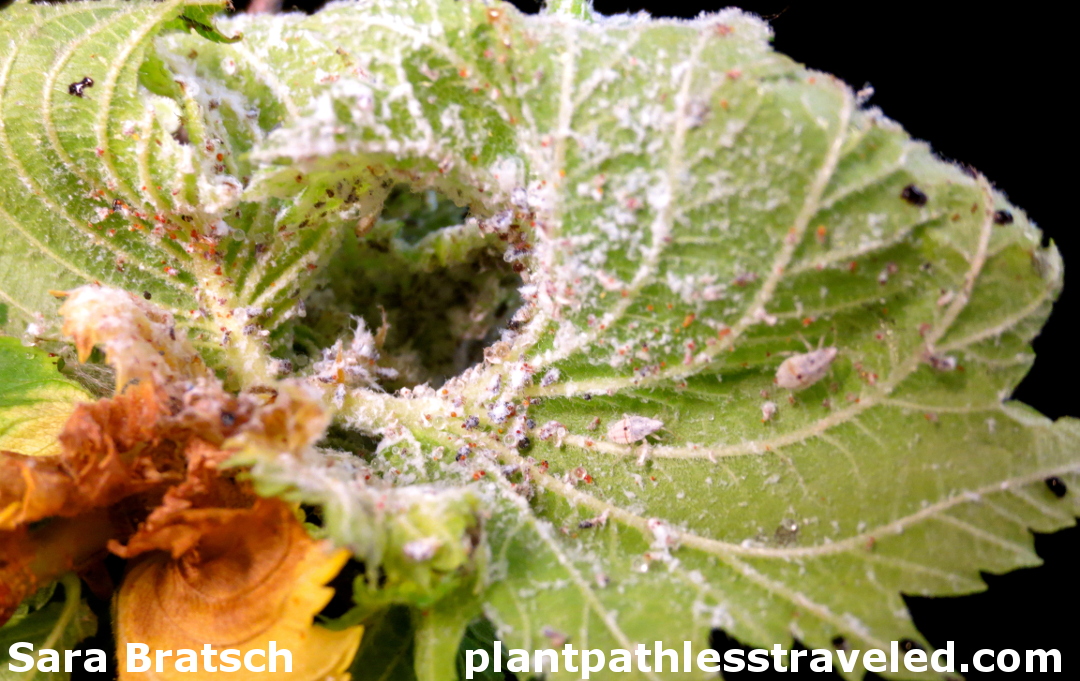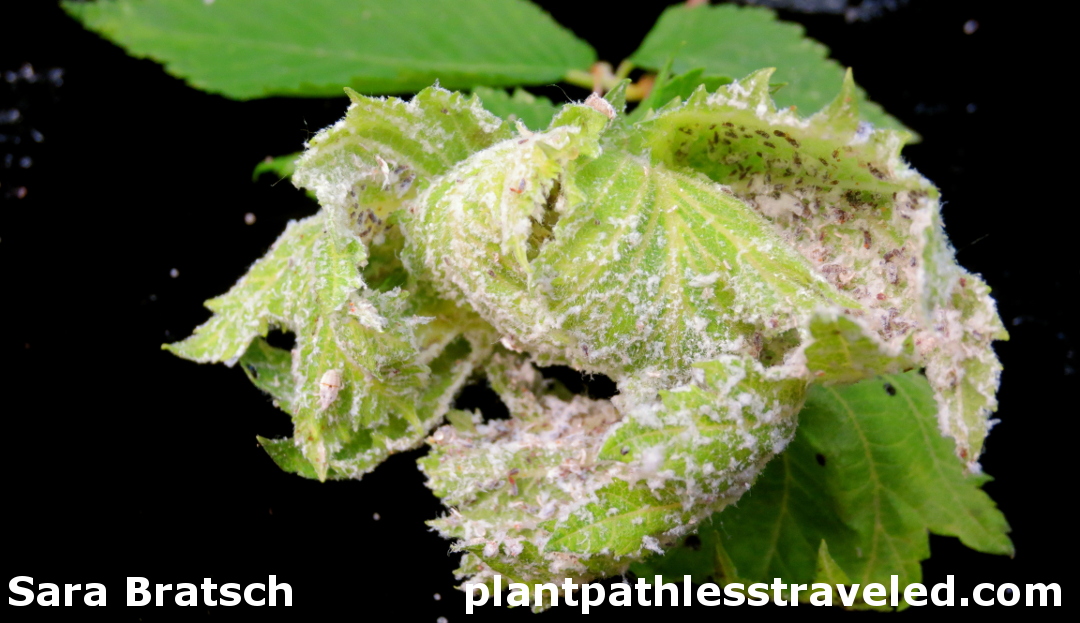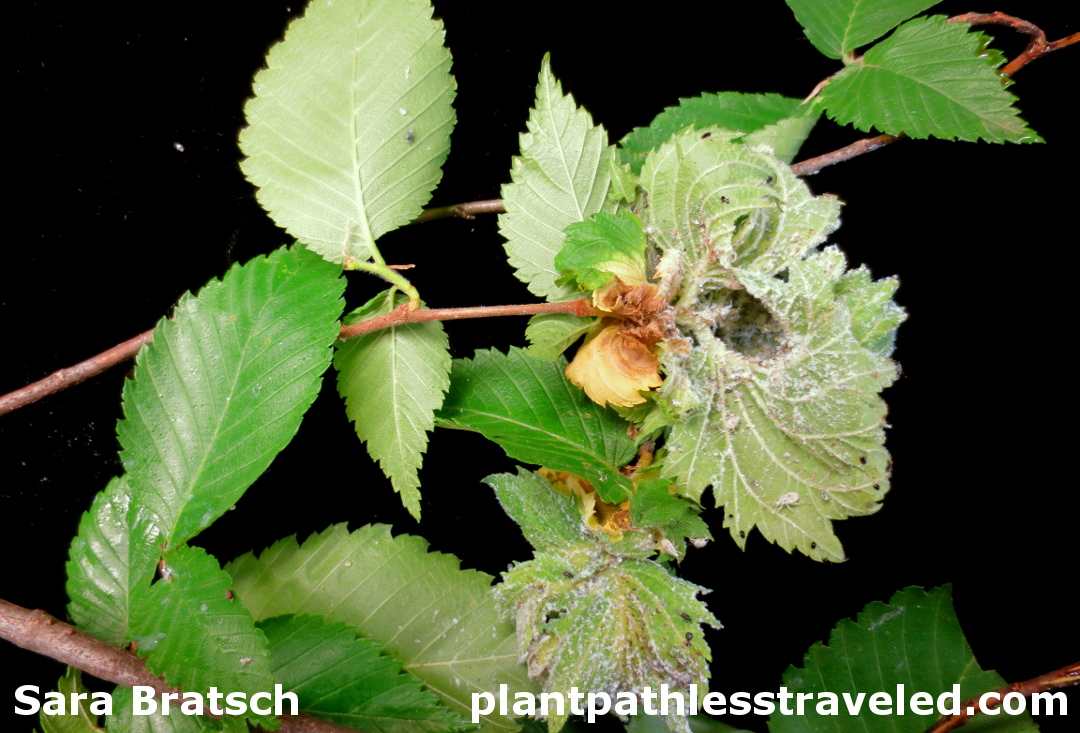Wooly Elm Aphid
Wooly aphids are plant pests that feed on various trees and shrubs. Each type of wooly aphid can produce several generations each year. The Wooly Elm Aphid (Eriosoma americanum) feed on elm leaves in the spring and moves to its second host, serviceberry, in late summer. The aphids move back to elm trees in the fall to lay eggs which will hatch the following spring and continue the cycle.


These aphids appear wooly due to secretion of wax which is used as a protective covering. The wax deters potential predators of the aphids. In addition to the fluffy wax that appears, the aphids also cause the leaves to become distorted.
The clear spheres seen on the second and third image are honeydew. Honeydew is a sugary liquid that aphids excrete while feeding. The honeydew can attract ants and is also quite sticky if it drips onto cars.
Although the damage may look severe, it is only aesthetic. The wooly aphid does minimal damage to mature plant hosts and will naturally be reduced in number as predatory insects and animals discover them.
All photos were taken by Sara Bratsch. For non commercial use only.
Please contact regarding all other uses.
Cite this article:
Bratsch, Sara. "Wooly Elm Aphid". 25 June 2014. http://plantpathlesstraveled.com/wooly-elm-aphid/
Citations:
UMN Extension: http://www.extension.umn.edu/garden/insects/find/woolly-aphids-on-trees-and-shrubs/
